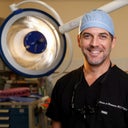Hi all :) Would you please let me know in your opinion, what is the risk of capsular contracture and bacterial infection for the periaerolar incision, compared to the inframammary fold one? How much higher is it theoretically and practically? Do you experience more revisions with this incision than the inframammary fold one? Your feedback is greatly appreciated, thank you!
Answers (29)
From board-certified doctors and trusted medical professionals
Dr. Andrew P. Trussler, MD

Dr. Andrew P. Trussler, MD
Board Certified Plastic Surgeon
Answer
Dr. Jerome Edelstein, MD

Dr. Jerome Edelstein, MD
Certified Plastic Surgeon
Answer
Dr. Rian A. Maercks, MD

Dr. Rian A. Maercks, MD
Board Certified Plastic Surgeon
Answer
Dr. Kevin Brenner, MD, FACS

Dr. Kevin Brenner, MD, FACS
Board Certified Plastic Surgeon
Answer
Dr. Rod J. Rohrich, MD

Dr. Rod J. Rohrich, MD
Board Certified Plastic Surgeon
Answer
Dr. Otto Joseph Placik, MD

Dr. Otto Joseph Placik, MD
Board Certified Plastic Surgeon
Answer
Dr. Gregory A. Buford, MD, FACS

Dr. Gregory A. Buford, MD, FACS
Board Certified Plastic Surgeon
Answer
Dr. Richard Baxter, MD

Dr. Richard Baxter, MD
Board Certified Plastic Surgeon
Answer
Dr. Daryl K. Hoffman, MD

Dr. Daryl K. Hoffman, MD
Board Certified Plastic Surgeon
Answer
Dr. Neal Goldberg, MD
Dr. Neal Goldberg, MD
Board Certified Plastic Surgeon
Answer
More Breast Implants Questions
See all Breast Implants Q&AWE SEND PRETTY
EMAILS
What’s trending? Who’s turning heads? Which TikTok myths need busting? We’ve got you. No fluff, no gatekeeping—just real talk. Get our free, unfiltered newsletter.